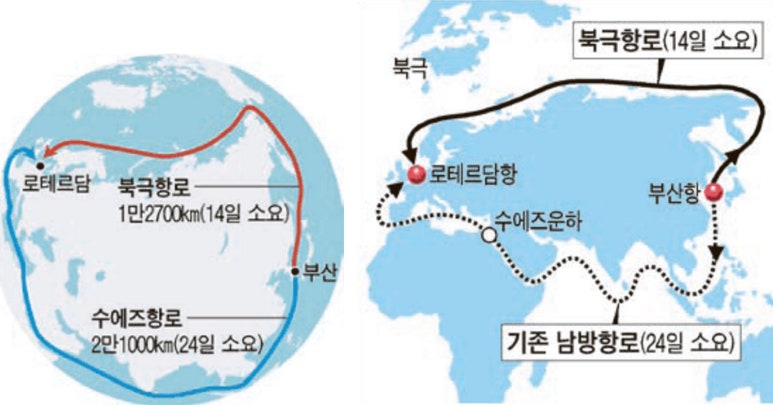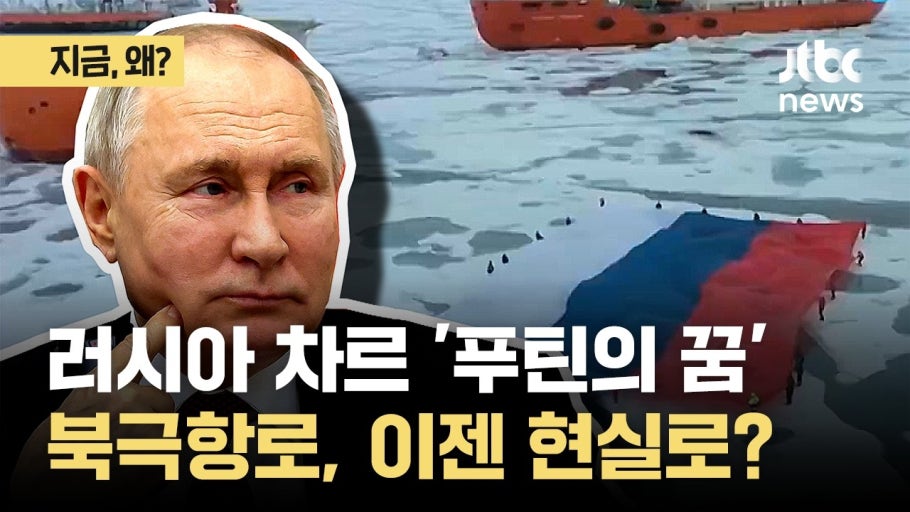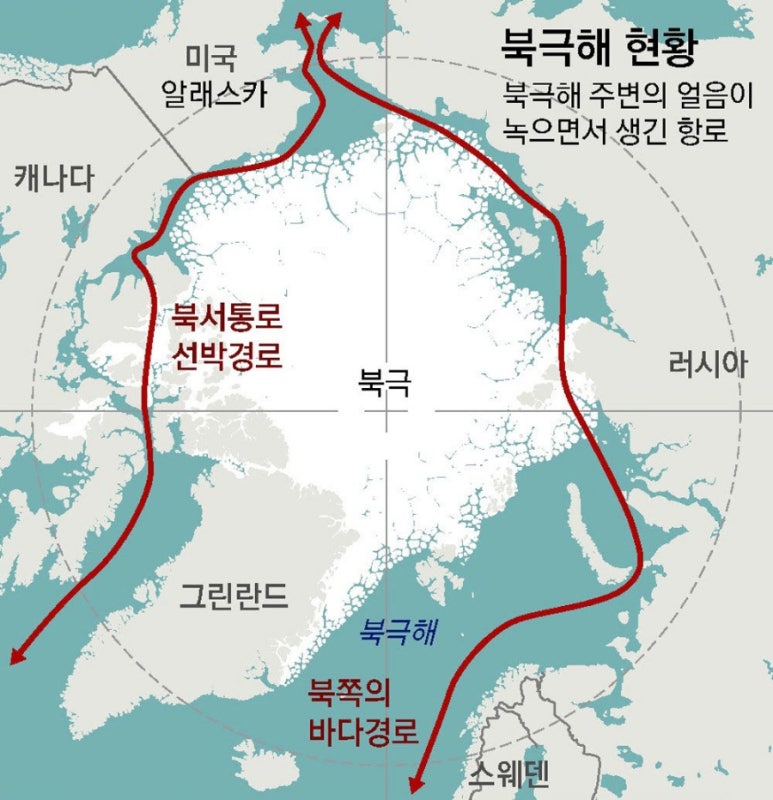Table of Contents
- Hot Potato 'Arctic Route': How Far Has Reality Come?
- A Dream Route or a Geopolitical Stage? The Two Faces of the Arctic Route
- Four Major Barriers to Commercialization: Economics, Operations, Environment, and Politics
- Nonetheless, Reasons the Market is Taking Notice: Movements in Arctic Route Related Stocks
- Conclusion: A 'Strategic Niche Route' of Global Importance
- Frequently Asked Questions (FAQ)
Hot Potato 'Arctic Route': How Far Has Reality Come?

Recently, significant activity has been observed regarding the development of the Arctic route among the government and relevant industries, attracting much attention. The Busan Port Authority has newly formed a dedicated team for the Arctic route, and the government is launching related committees and discussing special legislation. These efforts are heightening expectations for the commercialization of the Arctic route. The dream of creating a new maritime Silk Road connecting Asia and Europe has a long history but still faces several complex barriers.
The Gap Between Expectations and Reality

Although global warming is improving access to the route, commercial activation remains challenging due to high costs, unpredictable risks, and geopolitical conflicts.
This article aims to calmly analyze the potential of the Arctic route, which has been pursued for over 30 years, and to thoroughly diagnose various obstacles hindering its commercialization. Additionally, we will look into the trends of related companies that are attracting attention in the market.
A Dream Route or a Geopolitical Stage? The Two Faces of the Arctic Route
The Obvious Advantage of Shortened Distances

The biggest advantage of the Arctic route is the significant reduction in logistics distance between Asia and Europe. For instance, the distance from Busan Port to Rotterdam Port in the Netherlands is approximately 22,000 km via the Suez Canal, but if the Arctic route is chosen, it decreases to about 15,000 km, shortening the travel time by more than 30%.
This change could shorten sailing time by about 10 to 15 days, which may include potential fuel cost savings. The utilization of the Arctic route is expected to play an important role in improving logistics efficiency.
But the Reality is Russia's Strategic Passage

Behind the rosy outlook lies a complex geopolitical reality. Currently, the Arctic route is not just a simple international trade passage, but has become an important route for Russia's resource exports. This area is also a strategic space where fierce competition between great powers is taking place.
Most of the routes pass through Russia's Exclusive Economic Zone (EEZ) and are effectively under strong Russian control. This situation further heightens tensions in the international community.

Russia forces all vessels passing through the route to be escorted by its nuclear icebreakers, imposing high utilization fees. This measure not only secures safety but also serves as a crucial means of exercising Russia's sovereignty.
Especially since the invasion of Ukraine in 2022, Western sanctions have intensified, making the Arctic route an important passage for cooperation between Russia and China in the 'Ice Silk Road'. Consequently, Western countries face increasingly complex situations when using this route.
Four Major Barriers to Commercialization: Economics, Operations, Environment, and Politics

For the Arctic route to establish itself as a major route to replace the Suez Canal, there are many challenges to address. Notably, four critical areas of ongoing challenges exist: economics, operations, environment, and politics. These issues have a substantial impact on the activation of the route.
1. Absence of Economic Equation

The fuel cost savings from shortening distances are often offset by substantial additional costs. Factors like drifting ice and other high-risk elements may increase insurance fees up to three times compared to the Suez Canal.
Moreover, the construction cost of special ice-capable vessels was significantly higher than that of normal ships. Furthermore, if one considers the icebreaker fees that need to be paid to Russia, the total cost increases even further. These factors significantly influence transportation route selections.
2. Unpredictable Operational Risks

Despite global warming, the Arctic route can only operate reliably for a short period from late summer to early fall. This poses a significant drawback for modern container shipping services.
This service needs to operate year-round, yet unpredictable sea ice, a lack of ports or repair facilities for large vessels, and extreme weather conditions greatly reduce operational safety. These issues diminish transportation efficiency and represent serious challenges for the shipping industry.
3. Fatal Environmental Paradox

There are concerns that the phenomenon of climate change opening new routes may, in fact, further accelerate climate change. Black carbon emitted from ships is pointed out as a major cause of ice melting. Furthermore, in the event of an oil spill, the low water temperature and ice conditions make the cleanup practically impossible, which poses a significant risk of causing serious environmental disasters.
Nonetheless, Reasons the Market is Taking Notice: Movements in Arctic Route Related Stocks

Despite various challenges, the market's renewed interest in the Arctic route is clear. This is due to expectations surrounding policy changes by the government and the formation of new themes.
The establishment of a dedicated team at the Busan Port Authority and statements from the candidate for Minister of Oceans and Fisheries declaring their intent to lead the Arctic route era have had a significant impact. Additionally, the news of a government-level committee being launched is further increasing interest in related companies.
Key Related Stocks Mentioned in the Market

Currently, various companies are gaining attention in the market as 'Arctic Route-related stocks.' Notably, HMM serves as a central player as a major domestic container shipping company, while Dongbang and KCTC provide port handling and logistics services, playing supporting roles in this theme.
Additionally, companies such as Hanwha Ocean and Samsung Heavy Industries, which have technical expertise in icebreaker construction, Posco International, which has established an LNG value chain, and Hyundai Glovis, a comprehensive logistics company, are also mentioned in connection with this.
However, it should be noted that the rise in their stock prices is more significantly attributed to policy expectations rather than actual commercialization profits from the Arctic route. Careful scrutiny is required regarding this point.
Conclusion: A 'Strategic Niche Route' of Global Importance

Ultimately, the dream of pioneering the Arctic route, pursued over centuries, has yet to bear fruit. The true value of this route lies not merely in its role as a commercial competitor to the Suez Canal, but as a vital tool for Russia's national strategy and its significant geopolitical implications.
However, due to enormous costs, unpredictable risks, serious environmental issues, and intense geopolitical conflicts, it will not be easy for the Arctic route to establish itself as a mainstream global commercial route in the near future. These factors clearly indicate that they will continue to serve as significant obstacles to the development of this route.
A Rational Perspective Needed Before Investment

Investors should maintain a realistic perspective that recognizes the long time it will take for this 30-year dream to materialize instead of being swayed by short-term trends. Approaching with caution is crucial.
#ArcticRoute, #ArcticRouteRelatedStocks, #Icebreaker, #HMM, #Dongbang, #KCTC, #HanwhaOcean, #Russia, #USA, #Geopolitics, #ShippingStocks, #LogisticsStocks, #SuezCanal, #IceSilkRoad, #GlobalWarming, #EnergySecurity, #ResourceDevelopment, #BusanPort, #MinistryOfOceansAndFisheries, #EconomicNews, #StockInvestment, #ThematicStocks, #InvestmentInformation, #NewRoute, #Permafrost, #ContainerShips, #LNGCarriers, #PoscoInternational, #HyundaiGlovis, #SamsungHeavyIndustries
Frequently Asked Questions (FAQ)
Q. What is the biggest advantage of the Arctic route?
The Arctic route can shorten logistics distances between Asia and Europe by about 30%, reducing sailing time by 10 to 15 days.
The Arctic route significantly reduces the distance from Busan Port to Rotterdam Port in the Netherlands from approximately 22,000 km via the Suez Canal to about 15,000 km. This leads to a reduction in sailing time of about 10 to 15 days, which can contribute to fuel cost savings and improved logistics efficiency. Thus, the Arctic route has a clear economic advantage in reducing logistics time and costs.
Q. What is the biggest barrier to the commercialization of the Arctic route?
Four complex barriers—economic burden, operational risks, environmental issues, and geopolitical conflicts—are hindering commercialization.
Despite the fuel cost savings, the Arctic route incurs substantial additional costs due to high insurance fees from passing through ice, the construction costs of special ice-capable vessels, and the utilization fees for Russian icebreakers. The operational period is limited, and there are operational risks due to weather variables and a lack of port infrastructure. Environmentally, there are concerns about black carbon emissions and the difficulty of cleanup in the event of an oil spill, as well as fears of worsening climate change. Lastly, Russia's strong control and geopolitical tensions with the West make using the route challenging.
Q. What role and influence does Russia have in the Arctic route?
The Arctic route is strongly controlled under Russian leadership, and Russia strictly manages passage through icebreakers.
Most of the Arctic route is situated within Russia's Exclusive Economic Zone, where Russia exercises practical authority. They bolster their sovereignty by escorting all vessels through the use of their nuclear icebreakers and imposing high utilization fees. Notably, following the invasion of Ukraine in 2022, cooperation between Russia and China on the 'Ice Silk Road' has intensified, leading to increased international tensions. This complicates political constraints on Western countries' use of the Arctic route.
Q. What are the investment considerations in the Arctic route-related market?
While Arctic route-related stocks attract attention due to policy expectations, the price increases are more reflective of these expectations than actual commercialization profits.
Changes in policies, such as the establishment of dedicated teams at the Busan Port Authority and the launch of government committees, are drawing investor interest towards related companies. Key related stocks include HMM, Dongbang, KCTC, Hanwha Ocean, Samsung Heavy Industries, Posco International, and Hyundai Glovis. However, the rising stock prices are largely based on policy expectations rather than actual route commercialization profits, so investors need to maintain a prudent and rational outlook.
Q. Why is it difficult for the Arctic route to be commercialized in the near future?
Due to high costs, risks, environmental issues, and geopolitical conflicts, it is unlikely the Arctic route will become a mainstream commercial route in the near term.
The Arctic route faces significant economic burdens such as costs associated with special icebreakers, high insurance fees, and Russian utilization fees. The operational period is limited, and there are persistent operational risks due to weather factors and a lack of port infrastructure. Environmentally, concerns about black carbon emissions and oil spill risks are serious, and geopolitically, the tensions between Russia and the West pose significant challenges. All these elements are the main reasons hindering the global commercialization and mainstream status of the Arctic route in the short term.